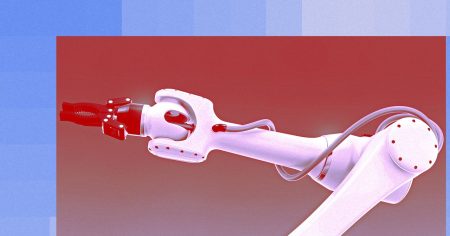Kent Ingle is president of Southeastern University, author of several leadership books and host of the Framework Leadership podcast.
When movies like The Terminator and I, Robot were released, a world dominated by artificial intelligence (AI) may have seemed like an elusive dream. Yet, today, it feels as if we are edging closer to it becoming a reality.
The last decade saw the introduction of the first humanoid AI robot, Sophia, (who has since earned citizenship to Saudi Arabia) and the disruption of tools like ChatGPT and Bard to academia. Slowly, AI has revolutionized our daily lives—from how we communicate with one another to how we enjoy entertainment in our homes.
While AI is at the forefront of education discussions, it’s also becoming a prevalent conversation and resourceful tool in the workplace. According to a Forbes Advisor survey, “Almost all (97%) business owners believe ChatGPT will help their business.” Some of the popular applications of how AI is being used in businesses today include customer service (56% of those in the survey) and cybersecurity and fraud management (51%).
AI is revolutionizing how leaders operate their organizations. As the president of a university that is navigating the new territories of ChatGPT, I’ve seen correlations between how to approach AI in the workplace and education.
Here are three examples of what I have learned in higher education that can be applied to how you lead your teams.
1. Champion critical thinking.
In the academic world, there is an ongoing discussion about how AI tools like ChatGPT could impede a student’s ability to develop soft skills like critical thinking. With a click of a button, AI solves mathematical equations and drafts papers, eliminating a student’s discovery process for problem-solving, research and analysis of information.
Soft skills are crucial for a student to flourish when they graduate and enter the workforce. But developing critical thinking doesn’t need to be left to the classroom, it can also be learned in the office.
How do you make room for critical thinking in the workplace? Set aside time for your team to collaborate on initiatives and offer solutions to an issue. Provide employees with tasks to create something from an idea and then present it to the entire team. Engage in discussions about goals that enhance your organization’s mission and ask your team to draft the steps to take. Extend critical thinking into how employees use AI. If they use AI to craft emails or analyze data, make sure they evaluate and edit the information.
Remember to leave room for your team to make mistakes and take risks without repercussions. By giving employees these types of responsibilities, you teach them how to make decisions, solve complex problems, identify solutions and learn to communicate their findings.
2. Value human relationships.
Everything we do in life, especially in the workplace, centers on relationships. While you can train AI to think, it lacks human attributes like empathy and emotional intelligence. It can learn the right things to say or write, but it can’t feel like humans do. Although AI is essential to staying competitive in the marketplace, you can’t diminish the value of human relationships.
One of the most significant investments your team members can make is not the work they do but the people they spend time with. Learning to cultivate more profound and meaningful relationships will unlock the potential for your team to learn about themselves, equip others and discover the power of collaboration. Continue to utilize AI tools to better your team, but remind them of the importance of forming personal relationships with others—whether it’s in your organization, with other professionals or with your client base.
For example, in higher education, we teach our students the importance of connections. The relationships they build are essential to their future success in their careers. Whether it’s through finding mentors or networking with individuals in their field of study, we encourage them to surround themselves with positive people who can help them grow and develop. And it should be the same in the workplace.
3. Approach AI as a tool.
AI taking over jobs is at the forefront of some people’s thoughts. A recent Goldman Sachs report revealed that AI could impact 300 million jobs, and 7% of jobs could be completely replaced. Resistance to innovative technology is often due to the fear of it displacing workers, taking away parts of their responsibilities or having to overcome a learning curve.
Instead of focusing on how it will disrupt the workforce, embrace AI to enhance your team members’ roles and increase their productivity. AI can be used to make work more efficient by generating automated responses to customers, summarizing copious amounts of data, translating information and producing content. With every member of your team, take the time to discover and show them how AI can help them succeed.
At our university, we developed a course for undergraduate students that discusses how they can use AI as a tool for academic success. We recognize that AI isn’t going anywhere, so we want to help students use it to add value to their educational journey. AI in every aspect—whether the workplace or classroom—can be viewed as a tool to enhance someone’s life without them losing the value of who they are and what they can accomplish.
The next time you head into a meeting ready to propose the newest AI tool to help your team, take a pulse of the room and understand how your team truly feels about it. Be ready to discuss your team’s concerns about AI.
What I have learned in higher education is that you will have people who are eager to use AI and others who are just trying to make it through the semester without having to learn something new. While AI tools are incredible resources, they can’t replace the value of investing in the people on your team.
Forbes Business Council is the foremost growth and networking organization for business owners and leaders. Do I qualify?
Read the full article here










